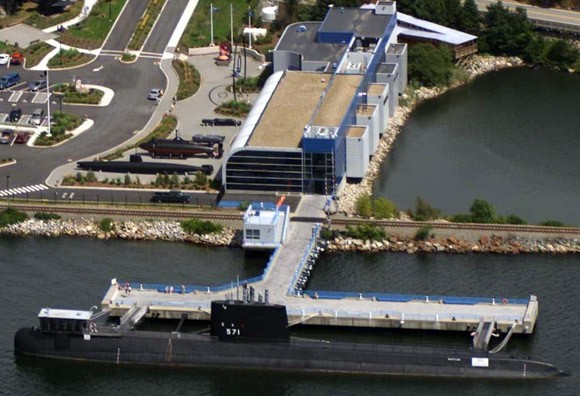
Historic Ship Nautilus & Submarine Force Museum. Photo courtesy of Historic Naval Ships Association.
The Submarine Force Library and Museum Association, Historic Ship Nautilus, and the Naval Historical Foundation are pleased to announce the selectees for the 2013 Science, Technology, Engineering, Mathematics, and History (STEM-H) Teacher Fellowships. From July 22 to August 2, the selectees will use the exhibits of the Submarine Force Museum and Historic Ship Nautilus to develop standards-based lesson plans, based on the technology, engineering, science, and mathematics inherent in the museum exhibits. Since the history of the Navy is the history of technology, a dual-certified STEM and history teacher was again included in this year’s fellowship team.
The selectees are:
- Ted Allen, Eighth Grade Science Teacher at Ledyard Middle School, from Groton, CT.
- Larry Chapman, Technology Education Teacher at Old Saybrook High School (Engineering Project Lead the Way courses), from Old Lyme, CT
- Stacy Haines, Mathematics Teacher at New London High School, from Mystic, CT
- Greg Felber, Mathematics Teacher at Ledyard Middle School, also certified in History and Social Studies 7-12, from New London, CT
The fellowship teachers will be immersed in submarine history, from the USS Nautilus to the technological history of our increasingly complex modern submarines. STEM features include: nuclear propulsion, electronics, computing, inertial guidance, missiles, chemistry, metallurgy, underwater physics, torpedoes, fire control, sonar systems, communications, and world-wide navigation systems. Navy technology led to many non-military applications that are commonplace in today’s world. Connecting the museum exhibits to student learning objectives brings to life the science and mathematics involved. The completed work of STEM Teacher Fellows from 2011 and 2012 is found at: www.usnavymuseum.org/Education.asp . Similar lesson plans have been produced by the Naval Recruiting Command for non-museum Navy settings at www.navystemfortheclassroom.com .

